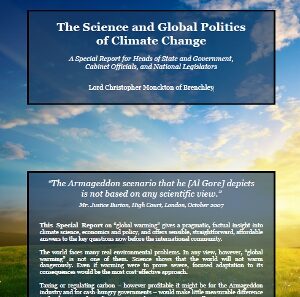Gamma rays, with their high-energy photons, are a fascinating yet intimidating aspect of the electromagnetic spectrum. At first glance, one might wonder: can gamma rays cause global cooling or heating? To delve into this intriguing inquiry, it is essential to understand the nature of gamma rays, their origins, and their potential interactions with the Earth’s atmosphere and climate system.
Gamma rays are produced by the most energetic events in the universe, including supernovae, neutron star collisions, and the annihilation of matter and antimatter. Although gamma rays are a small portion of the electromagnetic spectrum, their influence on the cosmos and terrestrial phenomena can be significant. The high energy associated with gamma rays allows them to penetrate matter, including the Earth’s atmosphere, but their interaction with our planet’s climate is far from straightforward.
Let’s investigate the mechanisms through which gamma rays might affect our climate. It is worth noting that, unlike other forms of electromagnetic radiation such as visible light or infrared radiation, gamma rays do not directly contribute to warming the Earth’s surface in any significant way. Instead, their influence is more indirect and tied to the reactions they provoke when interacting with atmospheric particles.
Upon entering the Earth’s atmosphere, gamma rays can collide with electrons and atomic nuclei, leading to a cascade of secondary particles and interactions. These events can result in ionization — the process of stripping electrons from atoms. Ionization plays a notable role in atmospheric chemistry, potentially affecting cloud formation by influencing aerosol concentrations, which are critical for cloud condensation nuclei.
Clouds are integral to the Earth’s energy budget, as they reflect sunlight and modify radiation absorption. The intricate relationship between gamma rays and atmospheric chemistry poses an interesting question: could increased gamma radiation from cosmic events alter cloud properties, thus influencing global temperatures? While such scenarios sound captivating, the actual influence of gamma rays on cloud dynamics and, by extension, climate, is currently not well understood.
Another relevant area of exploration is the potential role of gamma rays in triggering lightning. Lightning, in turn, can lead to the production of nitrogen oxides, which indirectly influences the greenhouse gas dynamics within our atmosphere. If gamma rays were to have a measurable impact on lightning frequency, this could potentially create complex feedback loops in the climate system. This begs the inquiry: in a world increasingly exposed to cosmic phenomena, how could changes in lightning patterns influence climate regulation?
Inevitably, discussions on gamma rays and climate lead to considerations surrounding cosmic events such as gamma-ray bursts (GRBs). GRBs are among the most powerful explosions observed in the universe and release vast quantities of energy in the form of gamma radiation. If a GRB were to occur in our galactic neighborhood, the consequences for Earth’s biosphere could be dire. The intense radiation could deplete the ozone layer, exposing the planet to heightened ultraviolet radiation. Such an event would likely result in significant ecological disruption, arguably leaning more towards global heating rather than cooling.
Furthermore, while gamma rays might not serve as a primary driver of climate change, they can contribute to the greater narrative about cosmic influences on Earth’s climate. For instance, higher energy cosmic rays, when colliding with the atmosphere, can influence cloud nucleation processes. The correlation between cosmic rays and climate variability, such as those theorized in solar and cosmic climate interactions, remains an area of keen interest among climatologists and astrophysicists alike. As we gather more data, these connections may elucidate how external cosmic phenomena interplay with terrestrial climate systems.
Moreover, the quest for understanding the role of gamma rays in climate prompts questions about humanity’s contributions to climate change. As the human footprint expands, the juxtaposition of anthropogenic influences against natural cosmic phenomena becomes increasingly relevant. When pondering whether gamma rays can cause global cooling or heating, one must also consider the implications of ongoing atmospheric changes due to fossil fuel emissions, deforestation, and urbanization. The climate system is intricate, and attributing shifts to specific sources—be they cosmic or terrestrial—poses a significant challenge.
In juxtaposing the complex influence of gamma rays with the more immediate threats posed by human activities, it is crucial to maintain a balanced perspective. While the phenomena surrounding gamma radiation are largely beyond our control, human-induced climate change is a facet that demands urgent attention and action. The developments in astrophysics may provide exciting insights into cosmic impacts on climate, yet the immediate need lies in addressing terrestrial emissions and sustainable practices that can mitigate climate change.
Ultimately, the climate discourse becomes a playground for inquiry as we dissect the myriad factors influencing Earth’s atmospheric dynamics. While it is unlikely that gamma rays will emerge as significant players in global cooling or heating, their complex interactions with the atmosphere offer a tantalizing glimpse into the broader cosmic narrative. As we seek to unravel the mysteries of our universe and protect our planet, it is imperative to broaden our horizons and explore all dimensions of environmental influence. Will the future reveal more connections between cosmic phenomena and climate behavior, or will the focus remain steadfastly on our earthly tribulations? The quest for understanding is a journey worth undertaking.






